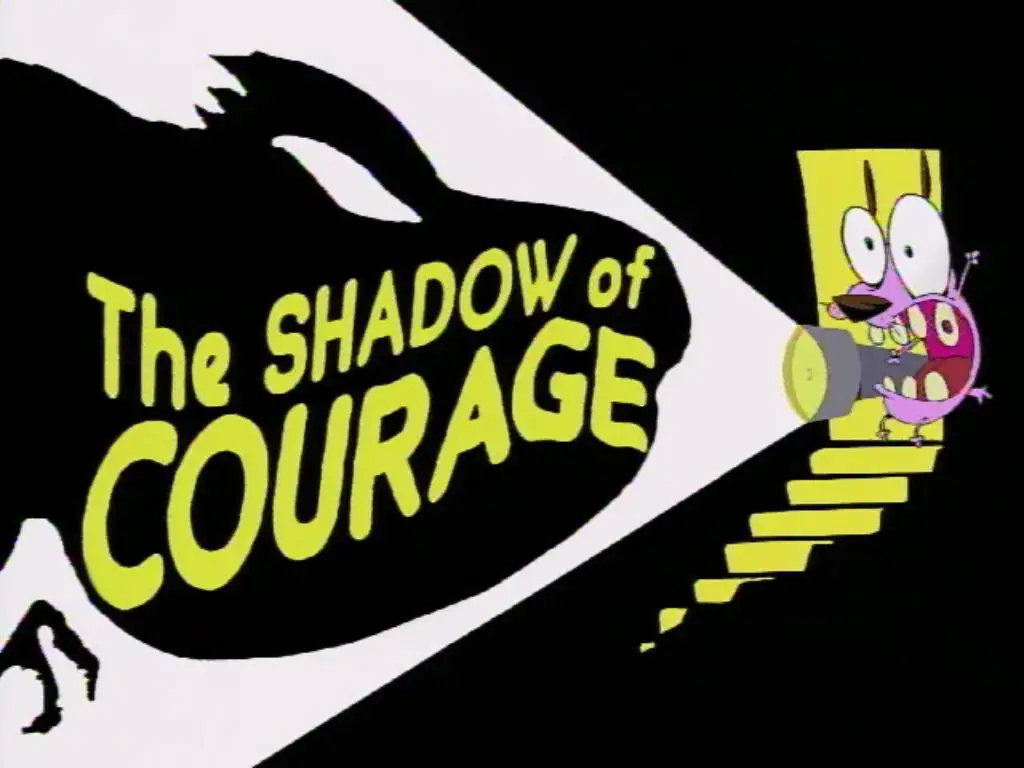At first I wondered if the title “The Shadow Of Courage” were a riff on The Red Badge Of Courage but no — apart from the grammatical structure and perhaps some of the themes (of bravery vs cowardice) this plot line borrows little from the classic American novel.
Shadows who disentangle themselves from their bodies are a staple of horror, and especially, perhaps, of camp horror comedy.
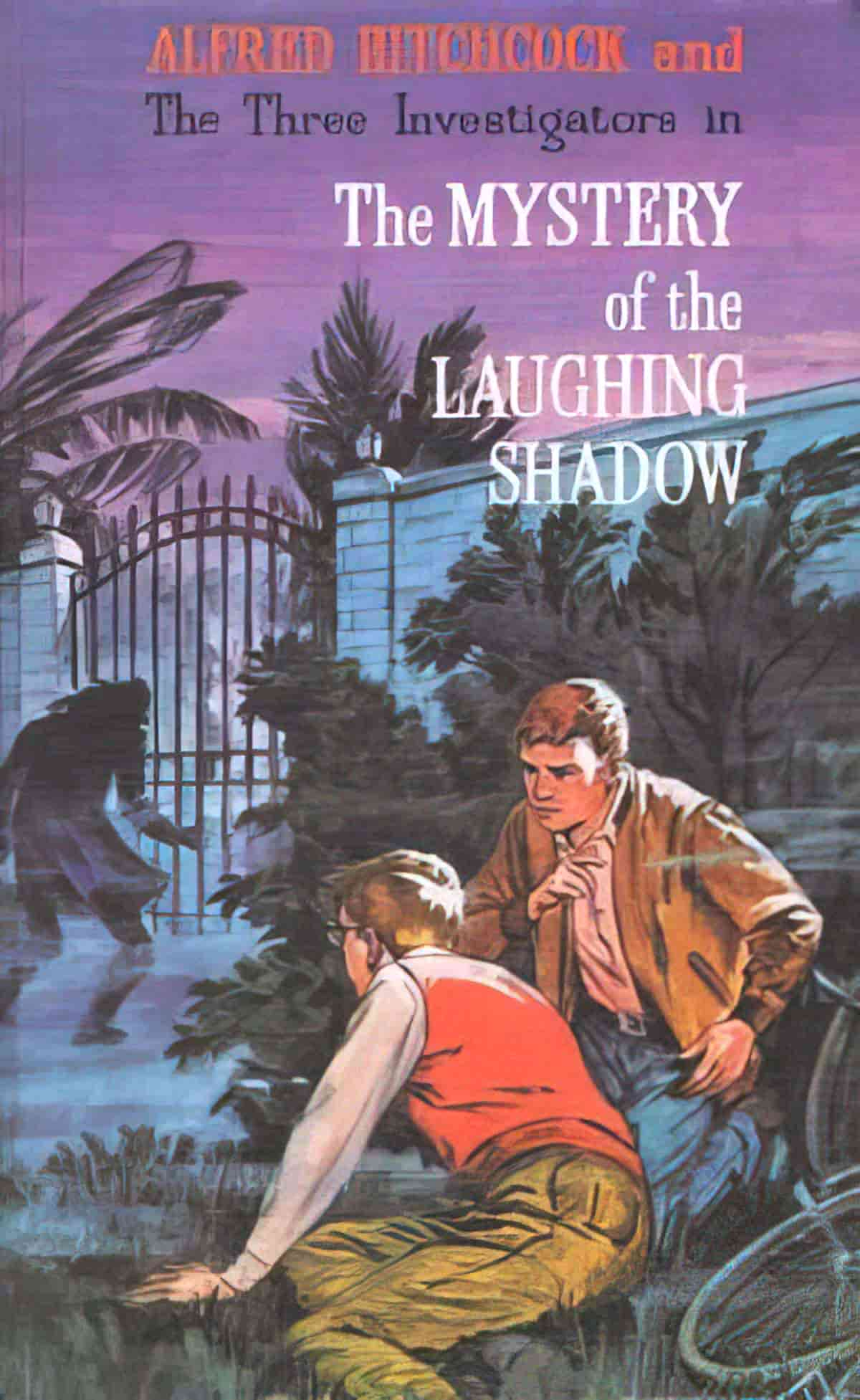
STORYWORLD OF “SHADOW OF COURAGE”
The Moon
Set in ‘Nowhere’, the moon in this particular story is even more important than usual. The very first image we see is of a huge moon. We see it again and again. The moon, we are lead to believe, has something to do with anthropomorphised shadows.
See also: The Rule Of Oversized Moons In Picturebooks
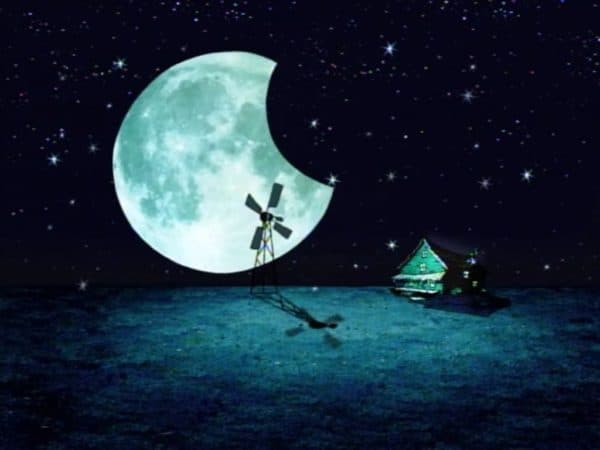
The house of Eustace and Muriel itself is a dream house, with the kitchen as a metonym for happiness (during the day and when Muriel is working away in it) but a terrifying prison by night. When Courage makes mischief after Eustace locks him in the attic, Eustace threatens that next he’ll be ‘sleeping with the termites’. This is a real threat because in the dream house there is only one place more terrifying than the attic, and that is the basement.
See: Symbolism Of The Dream House
Mismatched Shadows
A trick sometimes utilised in graphic design is seen in the two images below, in which the shadow cast differs from the person/object casting the shadow. It’s generally used for ominous effect, but could also be comical. I use it in our picture book app Midnight Feast to show how the main character is angry at being sent back to bed.
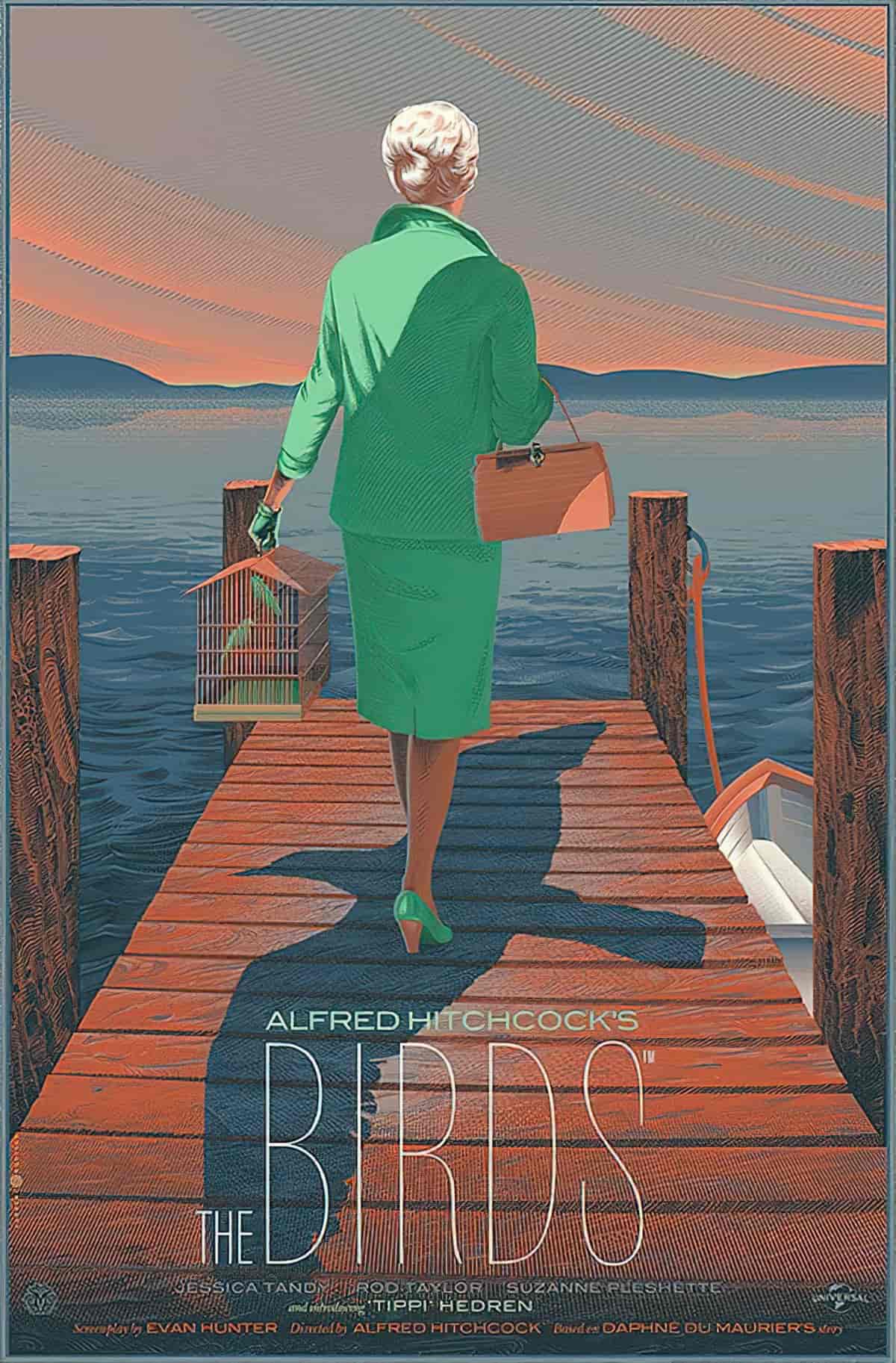
STORY STRUCTURE
In this story we have elements of
- “The Boy Who Cried Wolf”
- A psychological thriller, in which a character doubts his own sanity
SHORTCOMING
Courage is terrified of the thunderstorm outside. He imagines a burglar breaking and entering.
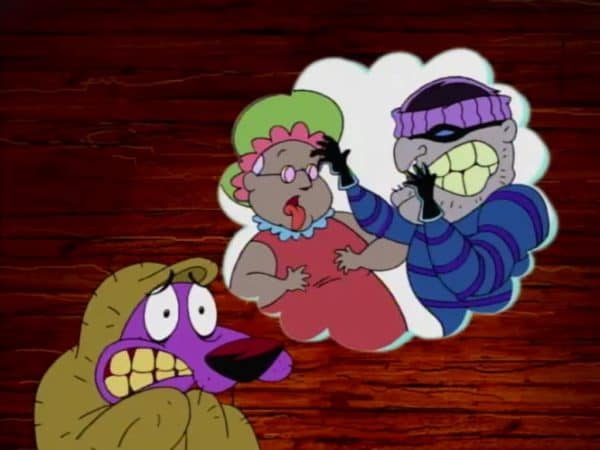
Unfortunately for Courage, he first coaxes Eustace and Muriel out of bed by telling them (via transmogrification) that there is a burglar in the house. When it turns out there is no such burglar Eustace and Muriel are disinclined to believe him when a real baddie enters the house. That’s where The Boy Who Cries Wolf analogy comes in.
DESIRE
He wants to save his family from the intruder, whatever it is. This is the same in every episode.
OPPONENT
The opponent, as in the previous Courage story, is introduced to us first. At first we think the main opponent of this story might be the evil old man looking at the moon through his telescope. But he soon dies of a heart attack.
Here is the establishing shot of the aristocrat’s house. He lives all alone in a big, dark mansion. We know that no good comes to old people who live alone in massive houses.
See Old Dark House at TV Tropes
You know that old, foreboding house up on the top of the hill, surrounded by thick forests, and accessible only by a single bridge that has a tendency to wash out during every rainstorm? Yeah, that one. Have you ever noticed that it always seems to attract eclectic groups of strangers who get invited for the reading of a will or a dinner party with a mysterious host? And why is it that the strangers keep getting killed off, one by one, during the night? It must be one of them doing it? But which?
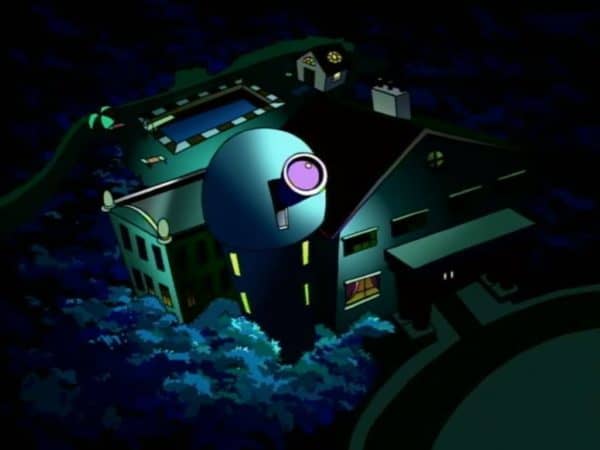
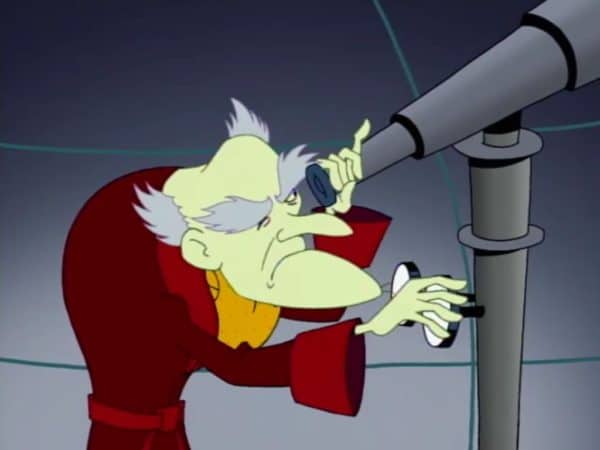
Next, we think the opponent of this story might actually be the butler, who has just been fired and looks about to turn evil. In fact, the butler is just a McGuffin. We don’t wonder what happens to him after he throws down his napkin and runs off, free for the first time in 50 years.
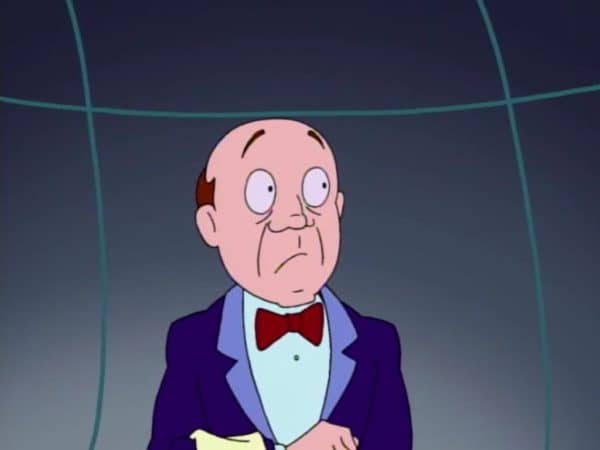
We then see the dead aristocrat’s shadow morph into a shape on the wall, taking on a life of its own. This is the real opponent of this story.
The viewer is shown right away that this shadow is playful in nature. First it terrifies a little girl eating an ice cream.
After she runs away it terrifies the scoop of ice cream she has dropped on the ground, which wobbles in fright. As a show for little kids, it’s important to establish that the baddie is playful/hapless/ironic/quirky.
As usual, Eustace is another of Courage’s long-term opponents. Not least because it is Eustace who locks Courage in the attic.
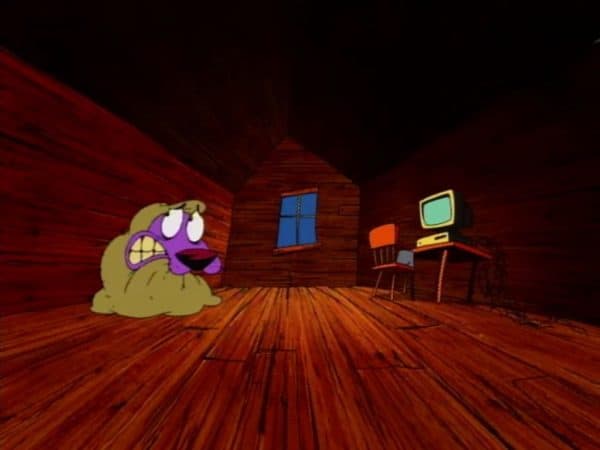
Eustace takes great delight in scaring Courage for fun and criticising him for failing to be a real dog, which strikes me as a variation on fathers jibing their sons for failing to be a real man. Here he scares him, but when Muriel enters and whacks him on the head with a rolling pin he gets his comeuppance and the audience is pleased that justice has been served.
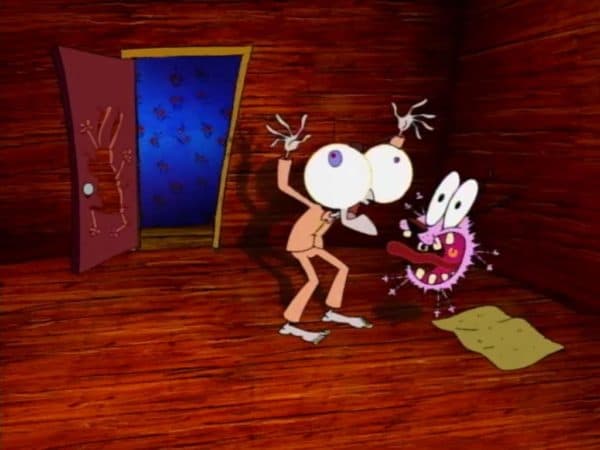
PLAN
The worst thing that could happen to Courage right now happens — Eustace locks him in the attic all alone. From the third-floor window he can see the evil approaching.
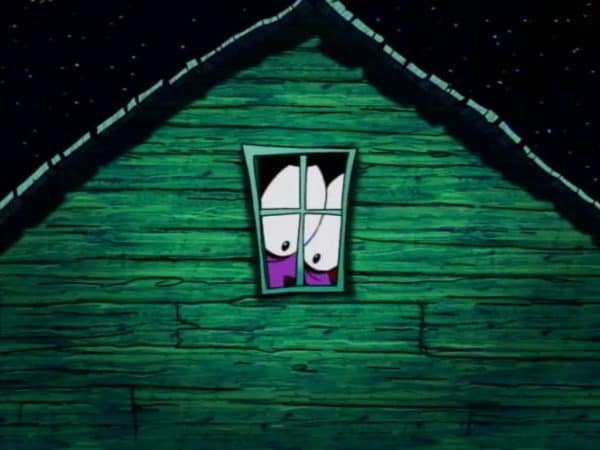
He breaks out to tell Eustace and Muriel, which is always his first plan — taken, of course, from the nature of real dogs.
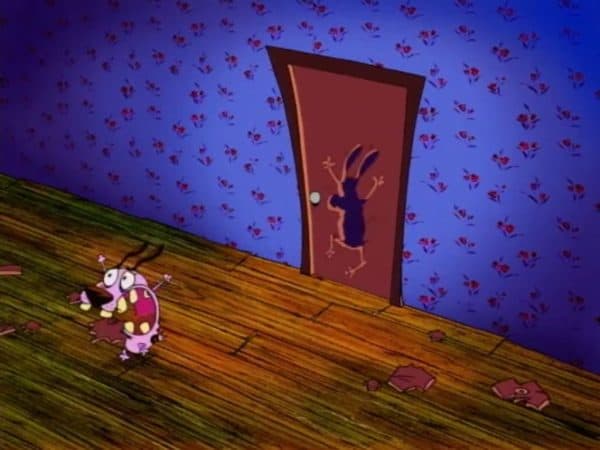
Although this series features a 1950s sensibility, Courage uses the Internet to find out how to defeat an evil shadow. This series was made in the early days of the Internet and the writers make a joke out of the way Google asks if you really mean such-and-such. It’s hard to remember now that this was ever novel.
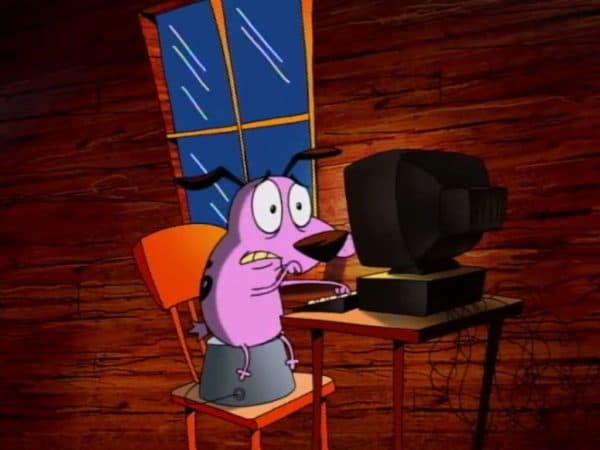
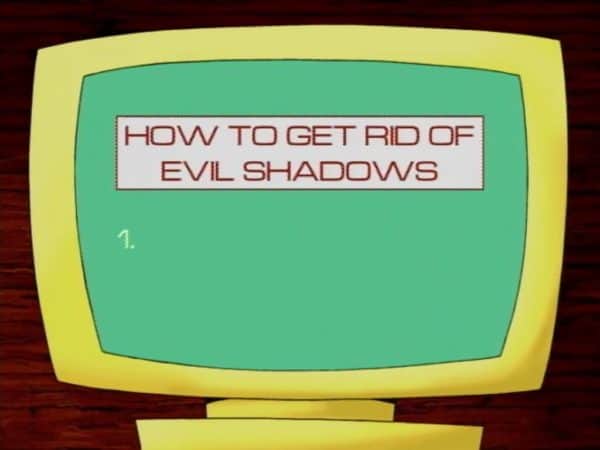
BIG STRUGGLE
There is an extended big struggle sequence as the evil shadow chases first Courage then Eustace around the house.
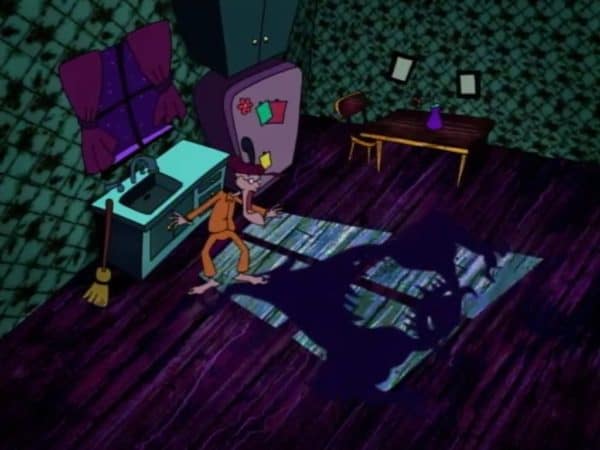
At one point Courage is hiding under the sink and Eustace in the fridge. We don’t know where Eustace is hiding until he emerges, which heightens the comedy. He has also lost his hat. Eustace’s baldness is also a source of amusement.
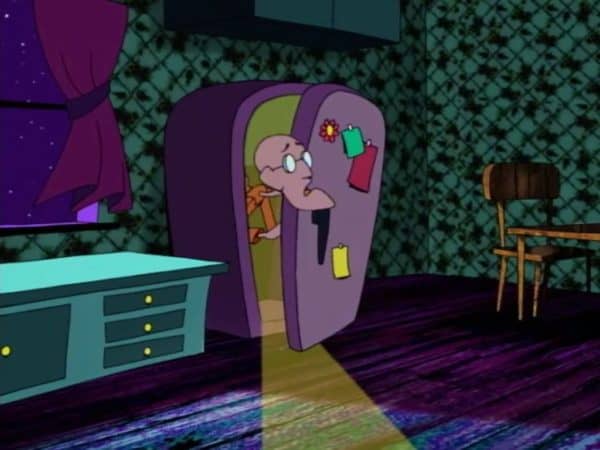
Eustace starts to doubt his own sanity, running around his own house chased by a shadow.
ANAGNORISIS
The Evil Shadow turns out to be a meek and mild character who has been held captive by his evil aristocrat for many years. He’s always wanted to work in show business and is really not evil at all.
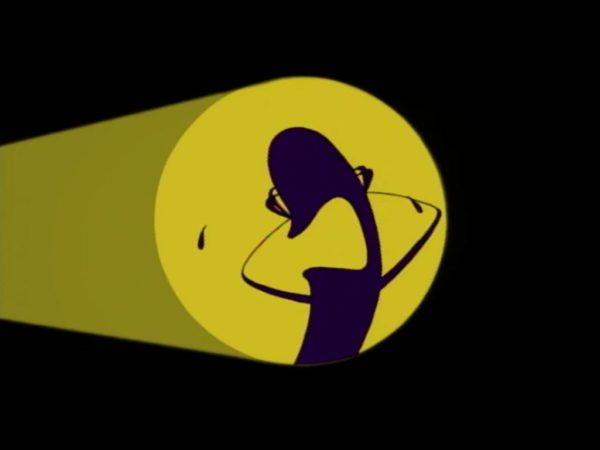
NEW SITUATION
For the short future, at least, Eustace and Courage are just a bit more afraid of shadows than they were before. When Muriel comes back to bed they first see her hair in curlers and are terrified once again.
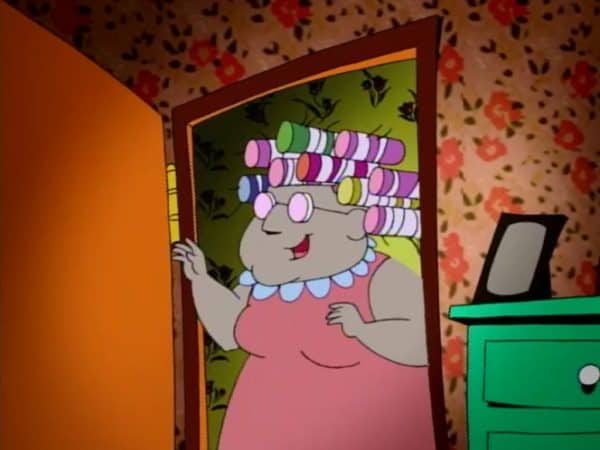
In a scene reminiscent of E.T., the shadow flies into the sky because Courage has suggested he be the shadow of a star.
